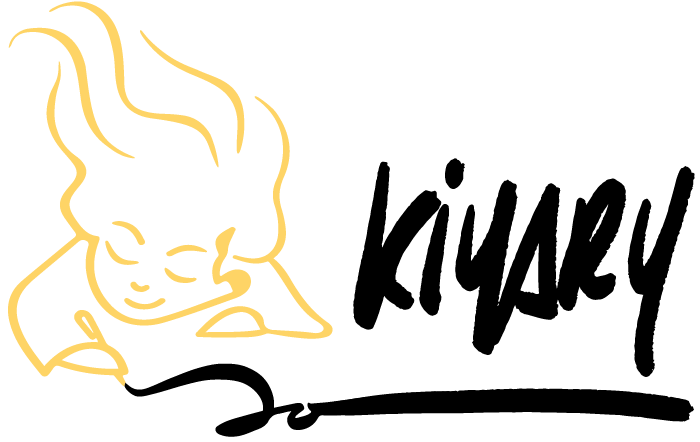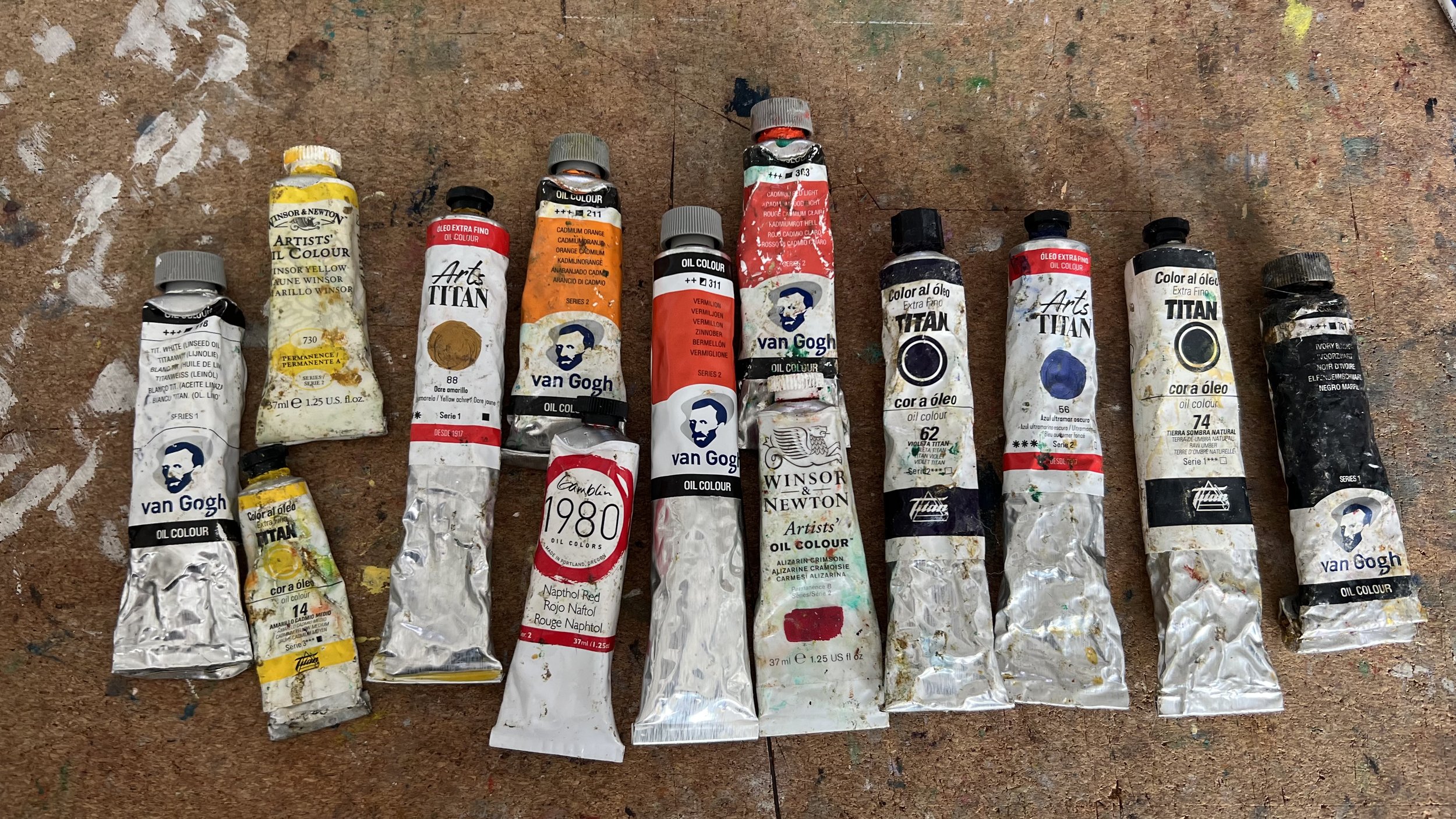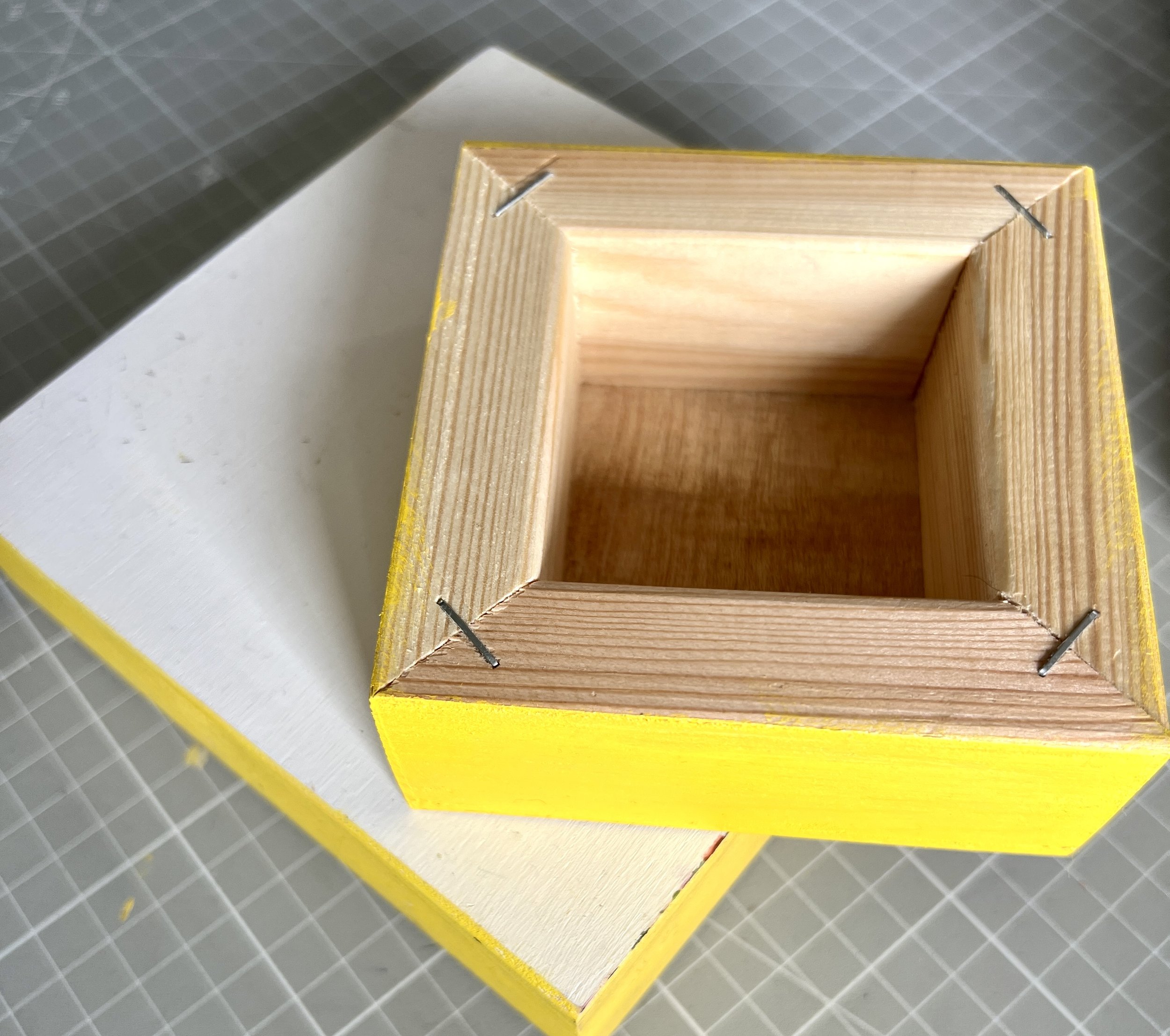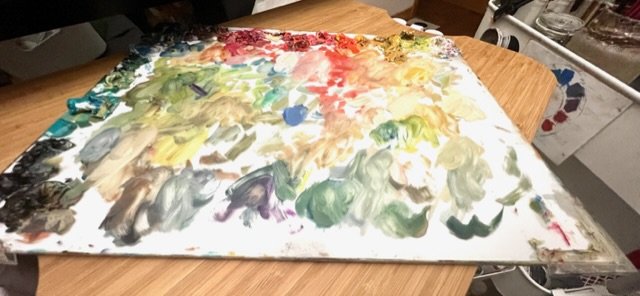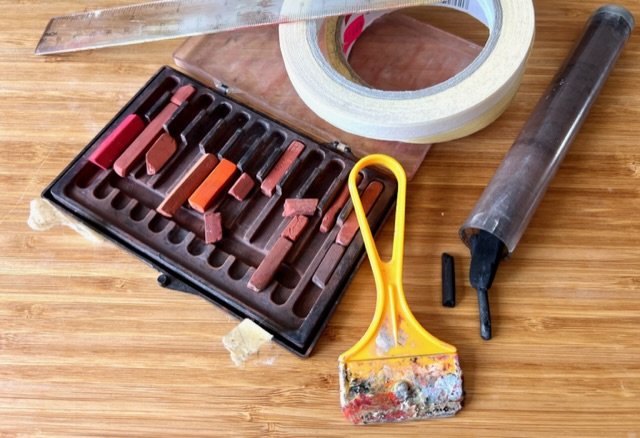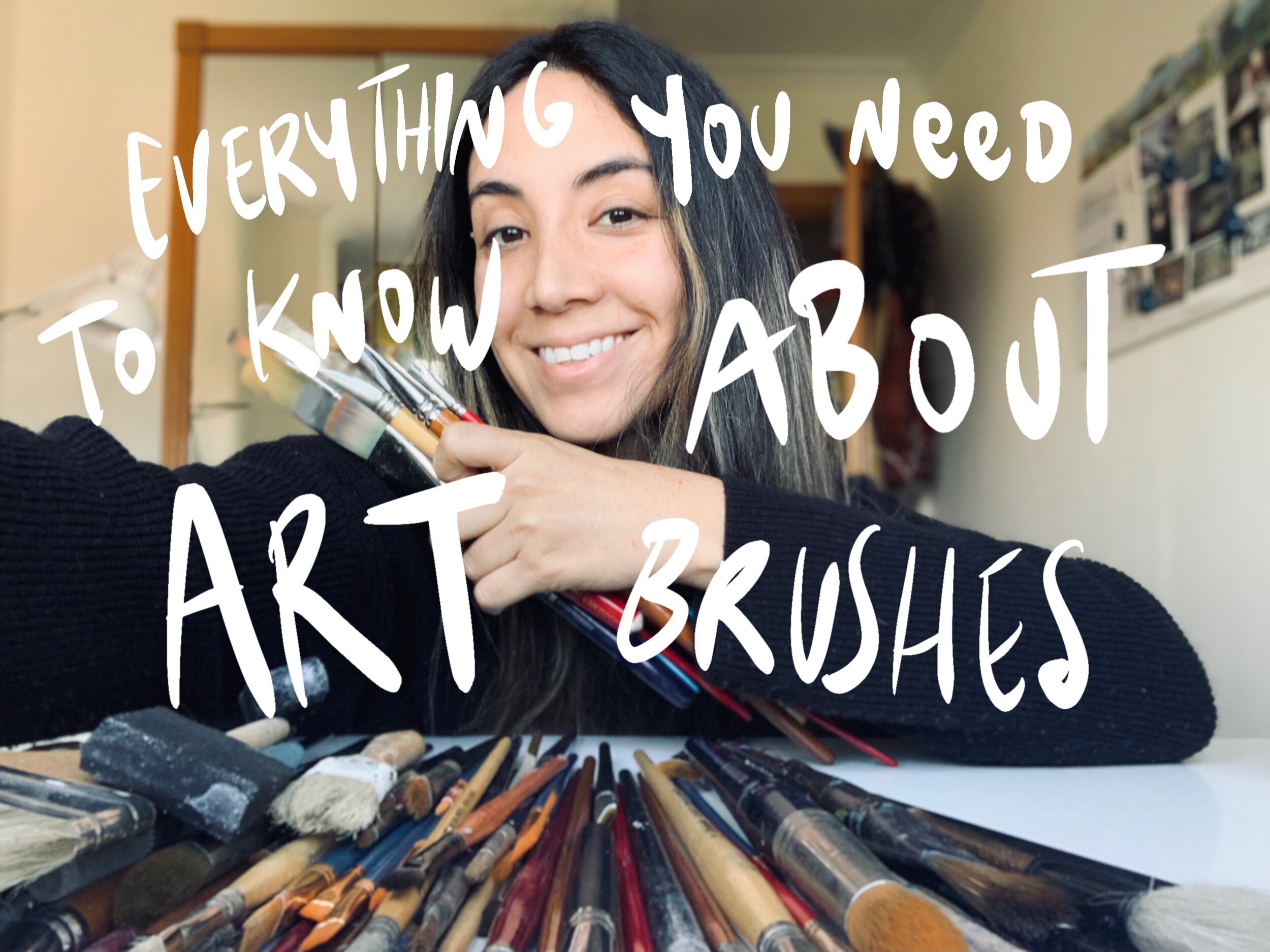What do you Need to start painting with OIl paintings: Art supplies toxic and non toxic!
This is my most compact and minimum set up, I travel with it around Europe, and I also carry it on my purse when I go out for a drink, and just add a chair or a tripod and I am all set to paint in the mountains :D!
a comprehensive list of materials to work with oil painting both in the studio and outdoors, and not die intoxicated, win-win
Hello fellow artists!
You have heard how painting with oil paints can be toxic, specially if you do it in a closed room with no ventilation.
Here is a brief list of my oil painting materials I am currently using to work in my studio building my illustration portfolio and painting portraits from photos. I do use these materials when painting outdoors on Pleinair in the mountains too!
When you start oil painting it can be a bit daunting to find out there are things called “mediums” and “thinners” and “brush cleaners” and “drying accelerators” (liquin is dis you?) , but really, you will see, there are not so many things you need for oil painting.
Before we dwell into all the juice details, to keep it simple these are the things you need:
summarised list of materials for oil painting:
Oil paints: titanium white, a yellow color (cad yellow), a red color (cad red), a blue color (ultramarine blue), and a black (ivory black) or raw umber
Brushes: rounds 00 and 2, flats 6, 10, 16 (basically the size depends on how big you paint, if you paint from an A4 and bellow these would be fine, if you paint bigger, you will need bigger brushes)
Medium and a sealable container: Sennelier green for oil thinner (to use at the beginning and clean brushes) and liquin to speed up drying time and viscosity (not necessary)
Painting Surface: Paper (Arches block for oil painting, or Canson block for oil painting) or panel (wood, MDF, samsonite, aluminium, etc), or canvas (cotton, linen, mixed)
Mixing palette, ideally glass (easier to clean), but you can also use treated wood or plastic
Rags or kitchen paper to clean the brushes when changing from one color to other
This above list is what you need to start painting with oils if it is your first time. All pretty essential, but of course, if you want to know why I have chosen these, or want to get more alternatives, continue reading further for all the details to make the most of your oil painting practice.
What basic oil painting supplies to carry when traveling?
When I travel I pack the smallest size of oil paints which is 20ml, and just these 5 colors: white, yellow (ideally cadmium, but any similar and less toxic is ok), red cadmium light (or equivalent), ultramarine blue, and either alizarin crimson or magenta or violet, and raw umber. Here’s what I take with me on the airplane, the paint tubes along with the medium go inside a ziplock plastic bag to follow airline safety and regulations, the oil paper (surface), the kitchen paper and the painting easel go inside and ideally in the bottom of my backpack, as it has a glass surface inside, I prefer to keep it close and secure.
Color palette for oil painting
For colours, basically you always need , a red, a blue, and a yellow, plus the white; besides you could make it work without a blue by using ivory black, and that would turn your palette it into a Zorn palette, (btw, a color palette is the colours you use to do your work with, it can have 4, or 5 or two, or 100), but a limited palette is so much easier to harmonise. Zorn palette is ochre, cadmium red, ivory black and white for example, and it super recommended to start with it after using black and white to learn values. Here is my handy small tubes (for carry on luggage!) palette:
at home color palette
My go-to color palette has the following colors: Titanium white, Cadmium yellow or Azo yellow or winsor yellow (depending on my budget or how much I will be covering with those colors), Cadmium red or vermillion or Napthol red, Raw umber, Ultramarine blue; that’s 5 colors as basis of everything I paint.
Sometimes I need a specific color, like a purple, or an intense green or a specific hue; so my extended palette has Alizarin crimson, magenta, violet, pthalo blue or even viridian or pthalo green, cobalt blue, yellow ochre, cadmium orange; I have also used other less traditional colors when trying to achieve an specific mood, like a transparent oxide red, golden ochre, English red, turquoise blue, among others.
so, What color paints do i need to start?
For beginners in oil painting I would recommend to stick to as few colors as possible, either try the zorn palette (white, cad red, yellow ochre and ivory black) or the basic yellow, blue, red and white; to learn how they interact with other colors, to really master them, once you have done that with 5 or 6 colors, you can go crazier adding more colors into your palette.
Mediums
Mediums are what you use to make your oil paints flow, or get thicker. The traditional mediums are Turpentine and white spirits (they are also thinners!). But these two are toxic, and anything similar to them is toxic per se (hello petroleum!), some people get headaches when using them, others react to the fumes. I have no reaction what so ever, but I like to go to the studio knowing I won’t be inhaling anything that would make me sick in the long term. Plus, my cat is usually sleeping either on my lap when I paint seated, or nearby, I will cut off my arm if I think I am causing him any harm! That’s why I use and recommend Sennelier Green for oil solvent, ever since I discovered it, this is my go to ‘medium’, it is not a medium per se, it is a thinner, but it does what I need it to for the first layer of paint and it’s completely toxic free according to the brand.
Another option created by Winsor and Newton is the Sansodor, which is basically like turpentine but smells less or the fumes at least are not as strong, nonetheless, it is still toxic to have it in an enclosed space.
So, if we are trying to work as toxic-free as possible, I have found more options that can achieve this. What I mentioned above from Sennelier, or you can also opt for oil, safflower oil (Winsor and Newton or Gambling) is the one I use and where I keep my brushes from session to session, as you can see in the photo above, but many painter colleagues also use walnut oil :)! Let me know if you have a preference and why!
The other option, which I have been trying recently is, Solvent-free Gel medium by Gamblin. When you pour this one on your palette (a small amount at a time), it looks a bit like Liquin, a gel-like consistency; but once you get it mixed with the oils, it gets more slippery. Sennelier Green for oil also offers a gel medium just like Gamblin.
Btw, Liquin is a medium by Winsor and Newton, which speeds up drying time for oil painting, it’s like a gel, but it is toxic to use in a closed environment, but it is incredible popular, and I know no one who hasn’t tried already in their oil painting practice.
Another alternative I discovered is a new medium by Sennelier, from their Green for Oil range, which is supposed to be toxic free, and apparently safe to travel with, I have emailed them to get more details on it, but I am still awaiting their answer.
I have, whatsoever, traveled with the thinner by Sennelier in my carry-on through Europe! (Germany, Netherlands, Spain, Italy, Poland) without any problem, of course ,in a very small sealed container in the liquids zip-lock bag.
If you are not using a toxic free medium, please please keep the area ventilated and open them windows! If not, you can try the mediums I use :D and enjoy a few more years of life, lol.
Brushes
I dedicated a whole post on brushes Here and it includes a summary of how to clean them, so I won’t go into more detail about them. But to summarize it I use a small round for “sketching” n2 and a 00 or 0/2 for signing or to draw the smallest thing on an specific detail; then, an assortment of flats 2, 4, 6, 8, 10, 12, 16 and 18 for bigger masses.
I’m mostly working on small formats. I can get away by using just 3 brushes, a small, medium and big brush. You really don’t need all the sizes, neither all shapes. Sometimes I have even managed to paint a whole painting with just one big flat brush, and use the small size to sign my name.
Painting surface
For the pieces on my last three exhibitions I used wooden cradled panels, which are reliable, sturdy and ready to hang, instead of complicating my clients with framing and hanging, I looked for a ready-to-go approach. I primed them (gessoed) before I painted!
For my other works in the studio, and for several studies, I have a blooming love for oil painting on paper, I love how I can work with my oils on a surface as paper, I really enjoy how the paint slides on paper and how quickly it dries. I do use paper specifically made for oil painting, Arches paper for oil, or Canson paper for oil painting.
Oil painting paper pads, arches for huile paper pad, linen canvas primed unprimed, and canson for oil painting XL
I have painted on unprimed papers too, paper not primed for oil painting makes Oil painting feel a bit like gouache, as the paper absorbs the oils, and the durability of an oil painting on unprimed paper is unknown and unwarranted.
I have no idea how the conservationists make it to ensure the durability of the works of great masters like Toulouse Lautrec or Sorolla who made some quick notes on paper, but there are definitely still some pieces surviving.
Another surface is the canvas, made either of linen, cotton or a mix of both. I used to paint on cotton canvas during my fine arts study years and also later from time to time; but I prefer the sturdiness I feel when painting on wood. For my last exhibition besides the wooden panels I decided to try already cut Belgium linen, which was quite a nice experience.
OTHER MATERIALS YOU NEED
Mixing palette
I would recommend a glass palette, you can buy a picture frame any size (the bigger the better), and set it on your table and voila, perfect easy to clean mixing palette for oil painting. A glass palette is easier to clean with a glass scratcher once the oil paints aredry, just scratch off the left over and start mixing again, plus it keeps the temperature of the oil paints colder than a wooden palette.
Another alternative is the traditional wooden palette, but after using wooden palette during my career, I just remember the struggle of cleaning it if I left paint to dry on it. A nightmare. Plastic palette has the same effect, although they are cheaper, they are not ideal for oil paints. Something I used to have on my wooden palette was a plastic adhesive (basically a giant sticker) which covered the whole palette (you can buy them in different colors, ideal grey or white) and once you have finished a session, you just remove it and throw it away, this is wasteful though, Hence, glass palette for the win!
cleaning tissues
To save on medium and to make it easier to change between colors, I use kitchen paper to clean off the paint before I dip it into the thinner. Cotton rags also work, and even toilet paper. Anything you have handy will work. Besides, you can use cotton rags to swipe off some paint from the canvas or painting, to make some lights when you are using a one color toning.
non essencial art supplies
With the above supplies you are ready to go and start painting, but here are a few more painting supplies you could check out or get (or most probably already have) to make your life easier when painting with oil paints.
Conte bars for drawing, scraper to remove dried up oil painting, charcoal for drawing, tape to tape the paper, or to create straight lines, also the transparent ruler helps to create straight lines and shapes
Tape can help you hold the paper on a wood plank or on your easel, also you can do some straight lines or hard edges with it.
A ruler can also help to create sharp edges or shapes otherwise hard to make with your hand and a brush.
Charcoal or conté, I prefer to sketch with a brush, but a pencil, or a charcoal (easier to clean off) can work to sketch the drawing of the painting, or you could also use a conté on an earth color if you are doing portraits or similar, also easier to cover with light colors.
A neutral white light helps if you are working in the studio indoors, not a yellow nor a blue light, the whitest light you can find, you can check on the kelvin gradation to find the whitest light, the highest the number the better, as it won’t affect the color you see of your painting.
A white umbrella, this will help you if you are painting outdoors, to diffuse the sunlight hitting on your canvas, or you can just paint under a shade.
Scraper to clean off your glass palette is the best thing.
I hope all these materials and art supplies give you an idea on all the things I use in my oil painting practice, of course, as I have mentioned at the beginning you do not need all of the above to start painting, it would be too much of a list and investment, so, once more in case all these info got too dense, and you just need to remember what you really really need:
summarised list of materials for oil painting:
Oil paints: titanium white, a yellow color (cad yellow), a red color (cad red), a blue color (ultramarine blue), and a black (ivory black) or raw umber
Brushes: rounds 00 and 2, flats 6, 10, 16 (basically the size depends on how big you paint, if you paint from an A4 and bellow these would be fine, if you paint bigger, you will need bigger brushes)
Medium and a sealable container: Sennelier green for oil thinner (to use at the beginning and clean brushes) and liquin to speed up drying time and viscosity (this one is not necessary but helps)
Painting Surface: Paper (Arches block for oil painting, or Canson block for oil painting) or panel (wood, MDF, samsonite, aluminium, etc), or canvas (cotton, linen, mixed)
Mixing palette, ideally glass (easier to clean), but you can also use treated wood or plastic
Rags or kitchen paper to clean the brushes when changing from one color to other
These above is what I carry with me almost every time I go out of home.
And with this short list, and the long explanation of the art supplies you need to start painting with oils, I give you farewell to our next post. You can also check the list of supplies and gear I suggest for plein-air painting during my workshops here.
Alas, if you have any doubts, do let me know in the comments, I will be happy to help :) You can reach me on Instagram, or check out my Youtube Channel, I post videos on all art related topics.
Go out, explore the world and happy painting!
Some of the links used on this post are Amazon affiliate links. This means that at zero cost to you I may earn a commission for purchases made through these links. However, this does not impact my reviews and comparisons. I only suggest products I’ve reviewed, and in many instances also use, in order to help you make the best choices.
